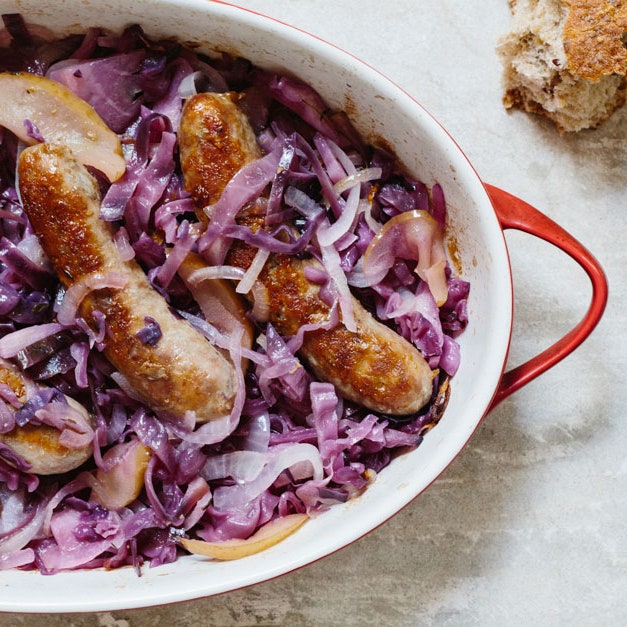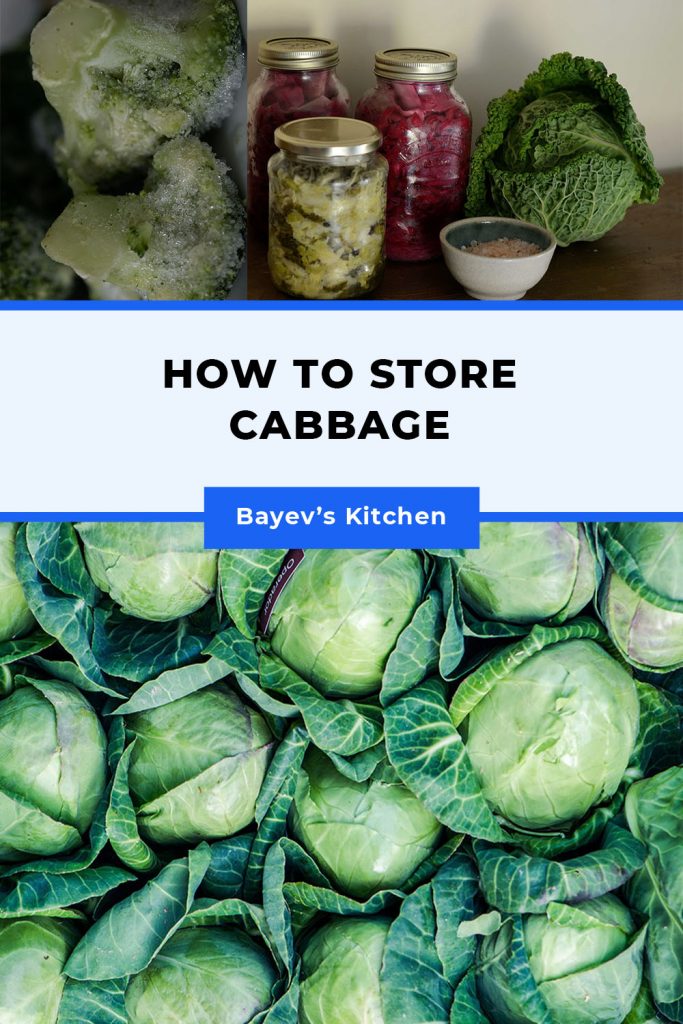Cabbage is one of the top 10 healthiest foods. It occupies a significant place in the national cuisines of many European countries, available and popular. And it also allows you to prepare a variety of dishes – from a light salad to an unusual dessert.

Today I will tell you all about cabbage – about its benefits, variety of species, ways to cut and cook it. And at the very end, I’ll offer a few of my favorite recipes in which cabbage is the star of the dish.
Useful properties and features of cabbage
Cabbage is a very healthy product, and introducing it into your daily diet is highly recommended.
Cabbage has more vitamin C than citrus fruits. For example, Brussels sprouts have 1.5 times more than oranges!

All varieties contain large amounts of vitamin P, potassium and manganese, which are necessary for normal functioning of the cardiovascular system, and minerals that normalize the acid-alkaline balance. Cabbage has few carbohydrates, so it has a low glycemic index. Plus it is low in calories, only 25-50 kcal per 100 grams, depending on the variety.
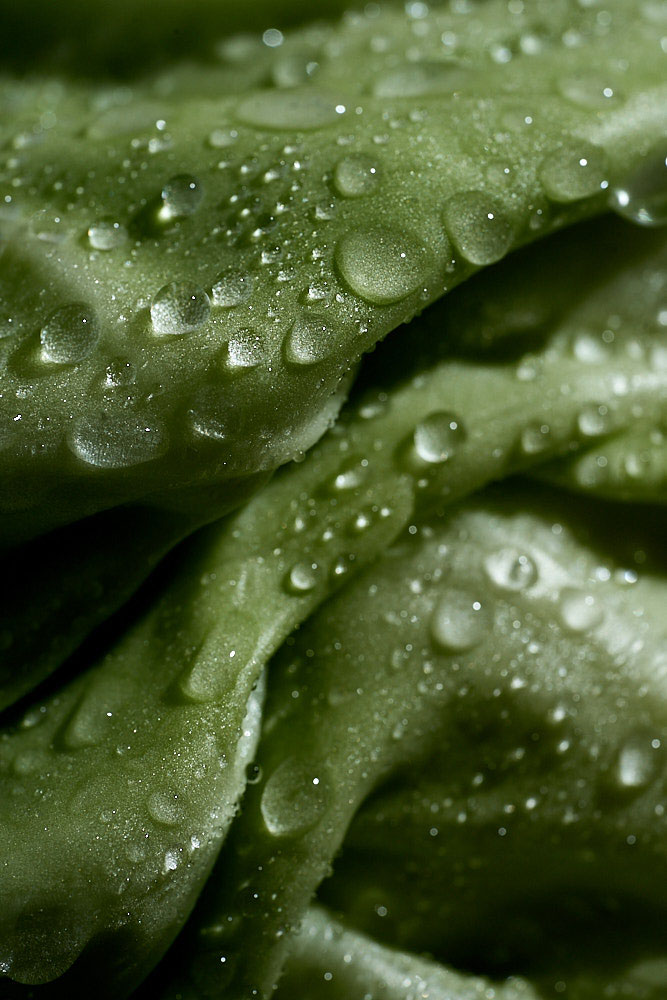

Types of Cabbage
There are many varieties of cabbage, and with a common basis they have many differences – in physical and chemical properties, flavors, cooking methods. Let’s understand all its diversity.
White cabbage

Available and probably the most popular. White cabbage goes in salads and soups, fried and stewed, pickled.
Beijing lettuce
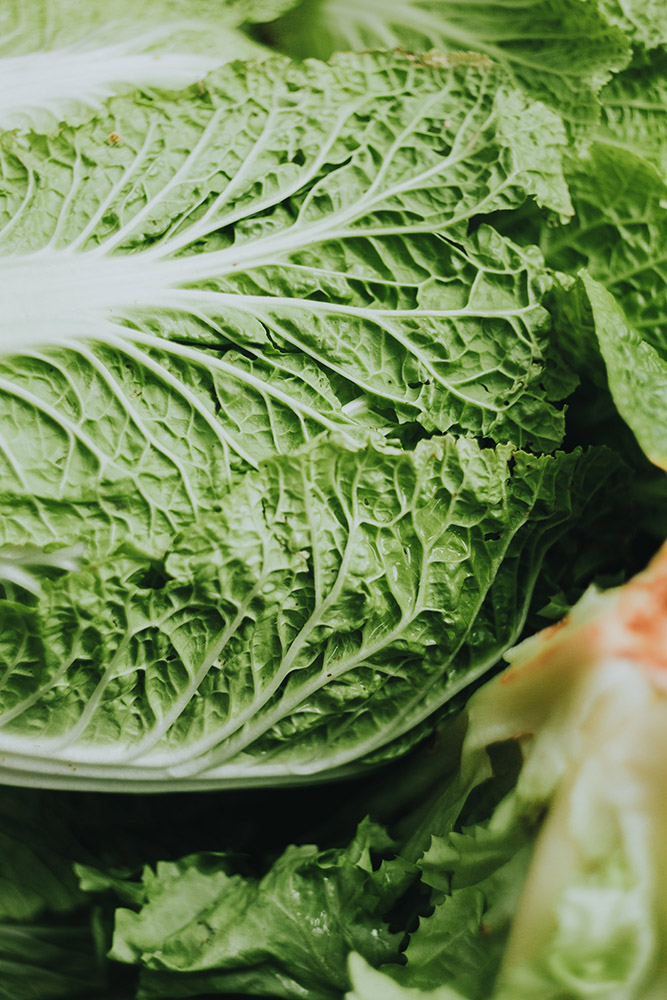
Also known by the names Chinese (chinaman), lettuce or Beijing lettuce. This vegetable with lacy elongated leaves appeared on the shelves of European supermarkets relatively recently, but in China it has been grown since at least the 5th century AD. It’s a great option for salads and appetizers. Try making cabbage rolls with Pekingese – its leaves are more delicate, which will give you a neater shape.
Brussels
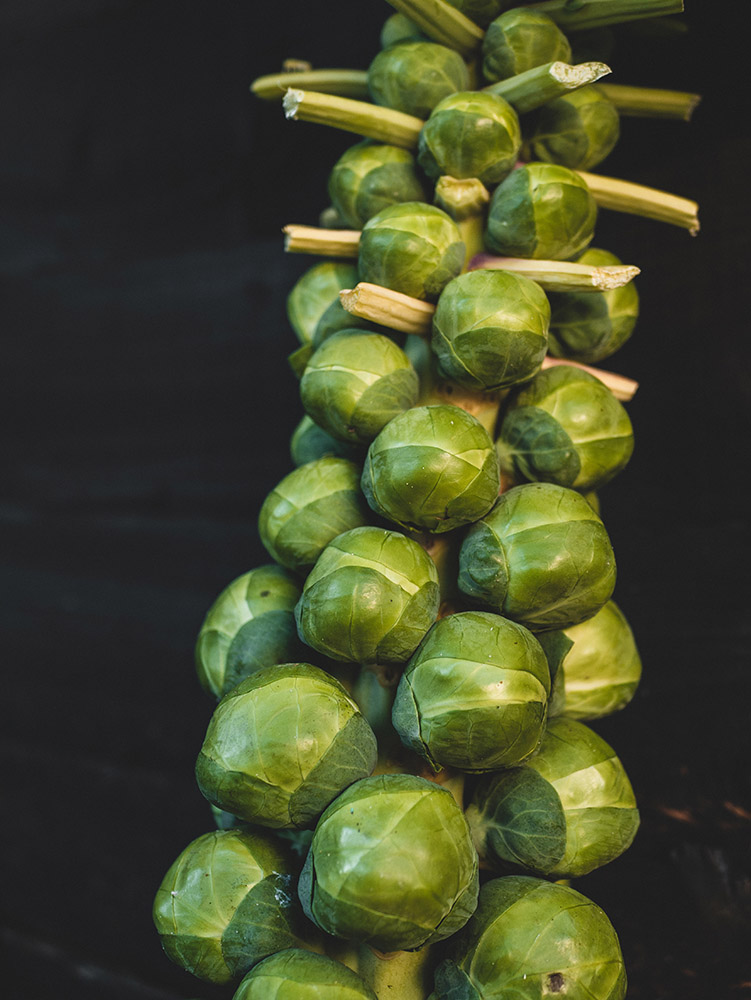
This variety of cabbage was not created by nature – it was specially bred by Belgian botanists. It resembles a white cabbage in shape, but is much smaller – the size of an egg. Its color is deep green, and the taste is sweet with nutty notes. The vegetable is quite capricious in cooking, but if you do everything right, the texture will be crisp and the taste is very delicate.
Savoy

Also similar to white cabbage in shape, but its leaves are dark green, with a corrugated texture, and the taste is softer and softer. Its homeland is a region in Italy, but it can be grown in different countries, it is not capricious. The only difficulty is that it stores worse than other varieties and is not suitable for fermentation. Therefore, during the Savoy cabbage season, try to use it as much as possible.
Red cabbage


It differs from white cabbage in color (red, purple or blue-green) and a spicier taste. It’s great for salads, stews, and is added to burgers and soups.
Kohlrabi

This is a kale, although it is not like other varieties in appearance or taste. Kohlrabi looks like a turnip, but tastes like the core (core) of a white cabbage. It comes from Germany, and literally from German it translates as “turnip of cabbage”. Kohlrabi is commonly used to make salads with mustard dressing and light cream soups, and finely grated cabbage can be added to pancake batter.
Pak choy (bok choy)

A Chinese variety whose bright green leaves are tightly packed together and shaped like a rosette. Pak-choy is used in Asian cuisine, where it is used to make salads, casseroles, and side dishes.
Broccoli

If cooked properly, broccoli tastes amazing. It is necessary to separate the florets from the stems, the latter can be added to soup or vegetable stew. The florets should be cooked al dente, preserving the natural crunchy texture. To do this, boil the broccoli for only 3 to 5 minutes and then place it immediately in cold water.
The caloric content and the balance of BZU of different types of cabbage are presented in the table.
| Type | Calories, kcal | Protein | Fats | Carbohydrates |
| White cabbage | 27 | 1,8 | 0,1 | 4,7 |
| Purple (red cabbage) | 24 | 0,8 | 0 | 7,6 |
| Colored | 30 | 2,5 | 0,3 | 5,4 |
| Beijing | 16 | 1,2 | 0,2 | 2,0 |
| Kale | 50 | 3,3 | 0,7 | 8,0 |
| Pak choy | 13 | 1,5 | 0,2 | 2,2 |
| Brussels | 43 | 4,8 | 0 | 8,0 |
| Kohlrabi | 42 | 2,8 | 0 | 0 |
| Savoy | 28 | 1,2 | 0,1 | 6,0 |
The caloric value of cabbage varies depending on how it is cooked. Let’s move on to the basic technologies of processing this product.
How to cook cabbage? Cooking techniques
Cabbage is stewed, boiled, fried, steamed and grilled. Let’s understand what happens to the product in the process of processing each of the methods.
Braising

Since cabbage leaves are very juicy, the braising technique is perfect for them. You can braise cauliflower, white cabbage or red cabbage in its own juice, adding only a little salt and pregrilling the leaves to release the juice. But without adding fats such a dish will be quite bland, so it is better to braise the cabbage with butter or heavy cream. And necessarily on low heat!
Stewing technique can be used for kohlrabi cabbage. But for Beijing, broccoli or Brussels sprouts this technique is not suitable, the vegetable will lose its crispy texture and will simply be unpalatable.
Roasting
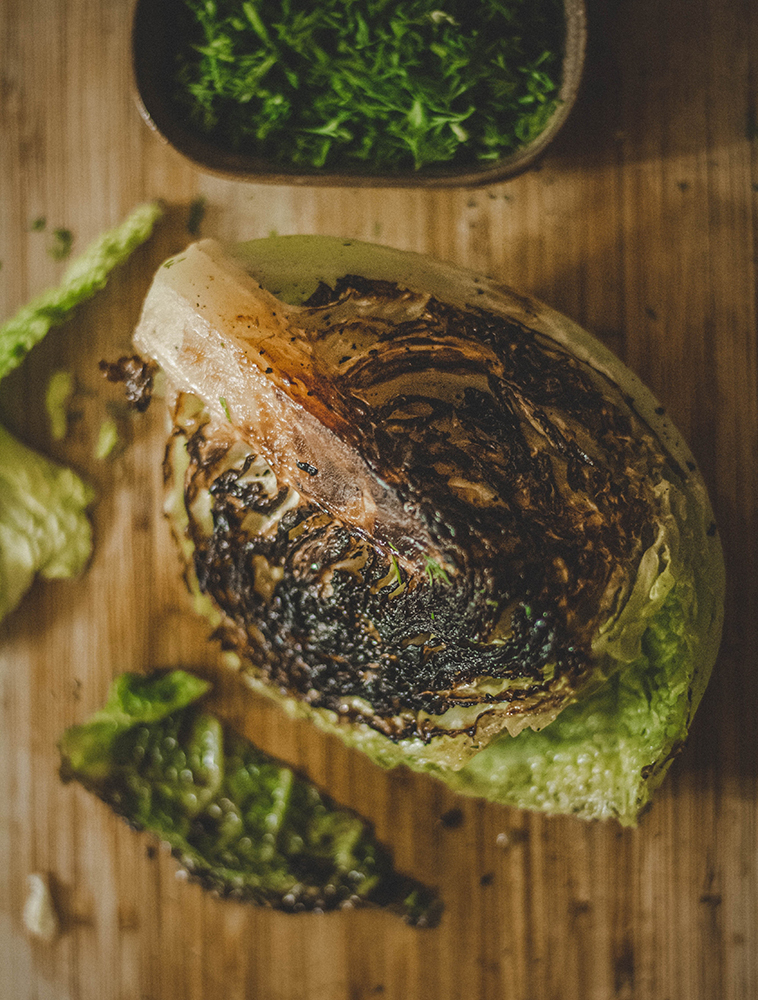
Roast white and red cabbage, cauliflower, kohlrabi, broccoli and savoy cabbage. Slice the cabbage into large slices – it’s best not to remove the core, it will help hold the shape. Lightly poach with boiling water, dry, and start frying. You can fry in batter or in breadcrumbs, use vegetable or melted butter – any of the options will be very tasty and rich.
Cabbage can be grilled without the use of oil. Many restaurants serve cauliflower or white cabbage steaks cooked on a grill pan. They can act as a separate vegetarian dish or act as a side dish to meat, best of all to pork. In Asian cuisine, kale is fried using the stir-fry technique.
Stir-frying
This technique is great for cauliflower, kohlrabi and Brussels sprouts. When fried, the vegetables get a beautiful golden crust, remain very attractive on the outside and crispy on the inside.
Baking
This method is mainly used for white cabbage, red cabbage, cauliflower and kohlrabi. For baking, use large pieces of cabbage, even larger than for frying, and grease them with vegetable or butter (animal fats can be used), so that the cabbage remains soft and juicy.
It is better to bake at low temperatures (140-160 degrees Celsius), re oiling the sheets every 10-15 minutes. The low temperature will not only preserve the juices and useful substances, make the cabbage soft and allow it to caramelize a little.

Cooking
For white cabbage, this is a variety of soups, but for broccoli and Brussels sprouts this is the main way to cook them. It is recommended not to boil the cabbage, but to steam it, adding a bunch of spicy herbs to the water – so you can preserve the juice and useful properties.
No heat treatment
For salads, appetizers, taco fillings, or cassadillas, cabbage is simply sliced and dressed with olive oil, mustard dressing, mayonnaise, balsamic vinegar, or other sauces. Also, many types of cabbage (white cabbage, red cabbage) can be pickled and canned for the winter. Heat treatment is also not used.
How do I cut cabbage? The basic ways of cutting
White and red cabbage are cut in sticks, cubes (checkers), slices or chopped. The form of cutting depends on the dish.
Straw
Cabbage is cut straw for the preparation of the first dishes, such as the classic Ukrainian borscht. Cabbage is sliced straw as follows:
- Cut the cabbage in half;
- Cut the halves into several strips of equal thickness (about 4 centimeters each);
- Shred the strips into thin straws. The optimal size is 0.2 centimeters, like a potato.






Chopping
Chop the cabbage for making fillings (for example, for stuffing). Chopping cabbage is very easy:
- Cut the cabbage in half;
- Remove the core;
- Cut the halves into strips and finely chop;
- Chop the straw into small pieces.


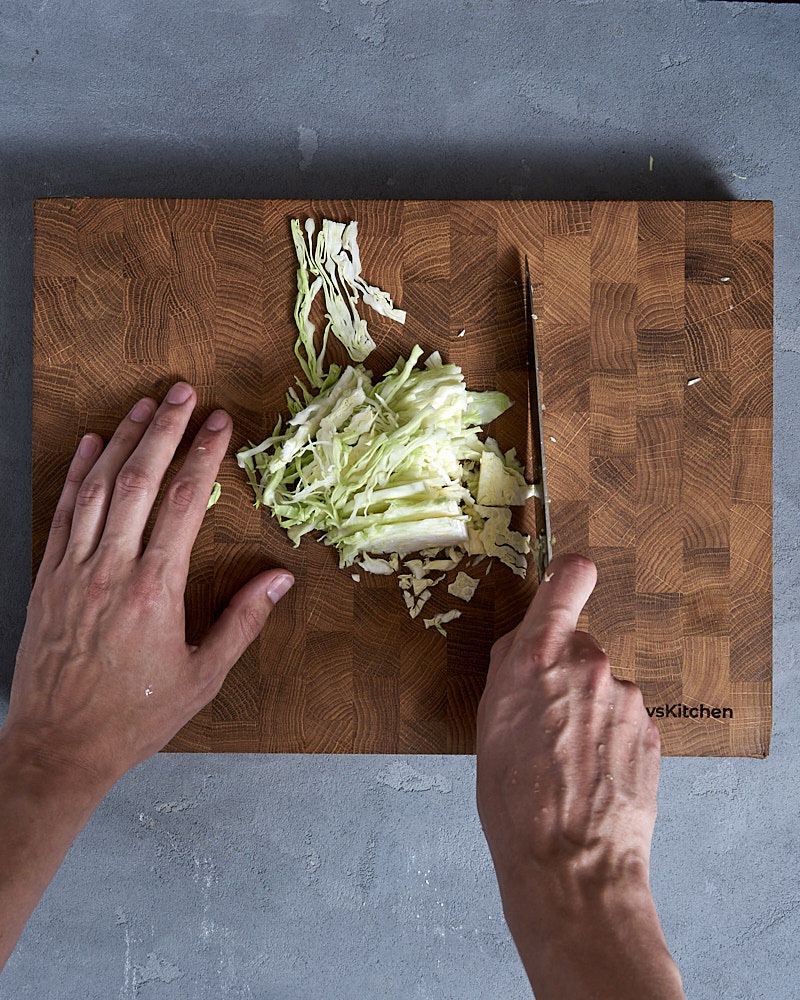




Checkers
Use in soups, stews and stews.
- The cabbage should be cut in half;
- Then divide each half into longitudinal strips 1-1.5 centimeters thick, and then across.
You will end up with even squares of the same size – about 1 x 1 centimeter or 1.5 x 1.5.


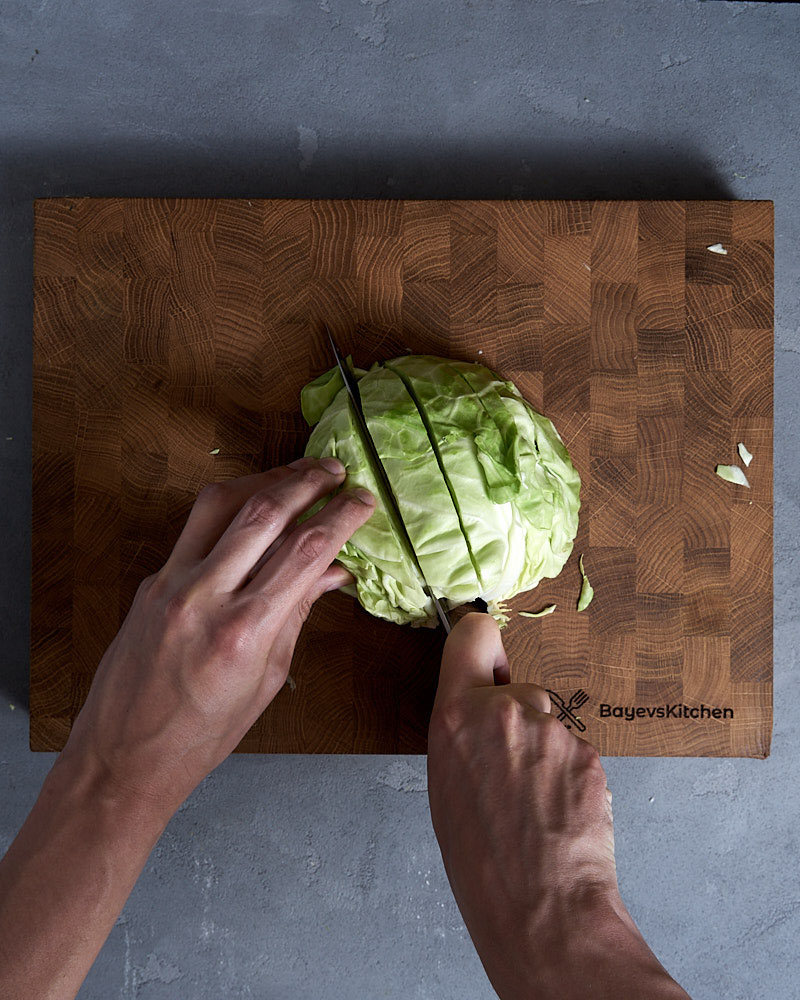



Slices
This slicing is only good for small cabbage. Sliced cabbage is suitable for stewing and boiling.
- Separate the cabbage into halves.
- Divide each half further in half or, if the size allows, into quarters.
Brussels sprouts are not usually sliced, but cooked whole. Cauliflower is divided into florets, and if they are too large, cut into several pieces. The same is usually done with broccoli.






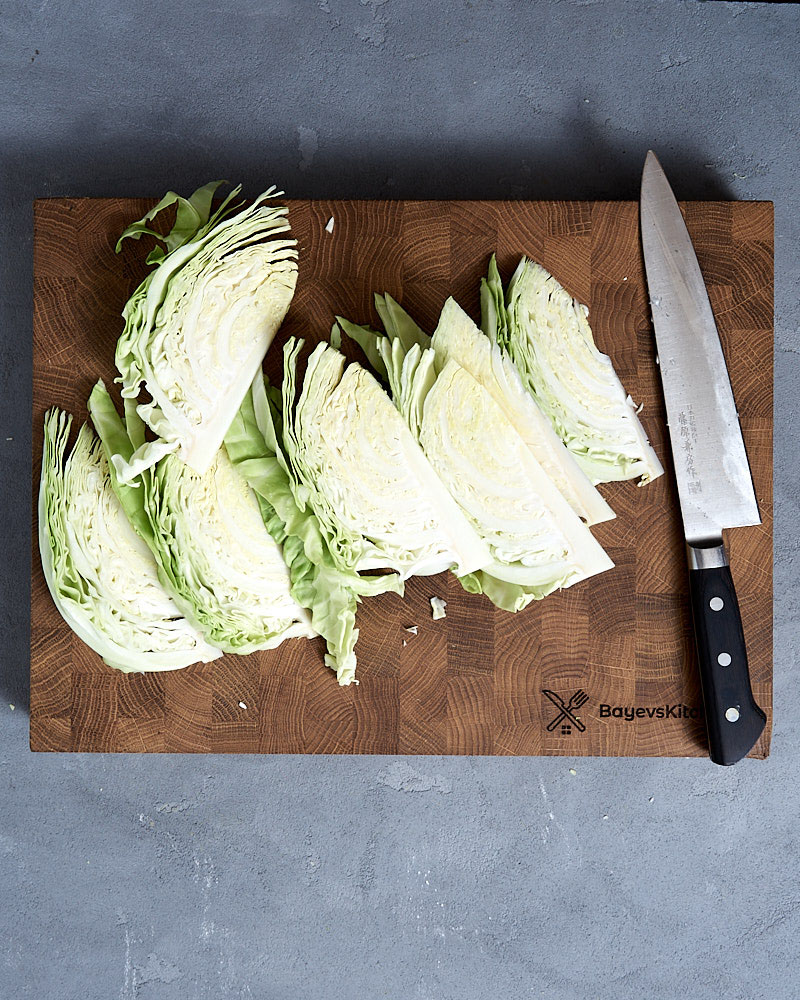
Rules for storing cabbage
Brussels sprouts are not usually sliced, but cooked whole. Cauliflower is divided into florets, and if they are too large, cut into several pieces. The same is usually done with broccoli.
Almost all cabbage varieties store perfectly well – with the exception of Savoy cabbage. There are several ways to store them.
Storing whole cabbage without handling it in a cool place
It’s enough to wrap the cabbage in cling film or paper and put it in the fridge or in a cool and dark place. It will easily “last” through the winter and spring, until the next harvest. Over time, the vegetable can become wilted, soft, and lose its appeal. This can be prevented and significantly increase the shelf life of cabbage by periodically removing the top leaves.
The use of food film doubles the storage time, and the product does not lose its taste and appearance. But most importantly, it retains its natural crunchy texture. Even after several weeks or months it will still look crispy as if it has just been cut from the patch.

Chinese varieties (bok choy, Peking) are stored exclusively in the refrigerator. Red cabbage and Savoy cabbage keep well in the fridge, but the latter do not last long – a couple of weeks at most. But it’s better not to keep cauliflower, Romanesque, Brussels sprouts in the fridge, they will “stale”, lose their freshness and crispy texture. They can be stored in a cool place outside the refrigerator or frozen.
I recommend a regular visual inspection of the vegetables, removing leaves that have lost their freshness. If the vegetable is rotten, it should be immediately separated from the other “brethren” – you can cut off the rotten places and immediately use it for cooking.
Storing leftover cabbage
If you have already cut the cabbage, cooked what you wanted – do not rush to throw away the leftovers. They store beautifully, and you’ll be able to make some more great dishes in a few days. Before storing, cut the cabbage into equal portions and wrap in clingfilm, paper towel, or place in a bag with 6 holes for ventilation.
If you want to preserve leftover broccoli or cauliflower, be sure to cut off the stems, leaving only the inflorescences. But remember that you can’t keep an already cut vegetable for long, even in the refrigerator, try to cook it in the next 3 days.
Freezing
Broccoli and Brussels sprouts can be frozen and kept in the refrigerator. Frozen cabbage easily keeps for almost a year (10 months for sure). The main thing is to properly prepare the vegetables in the freezer.
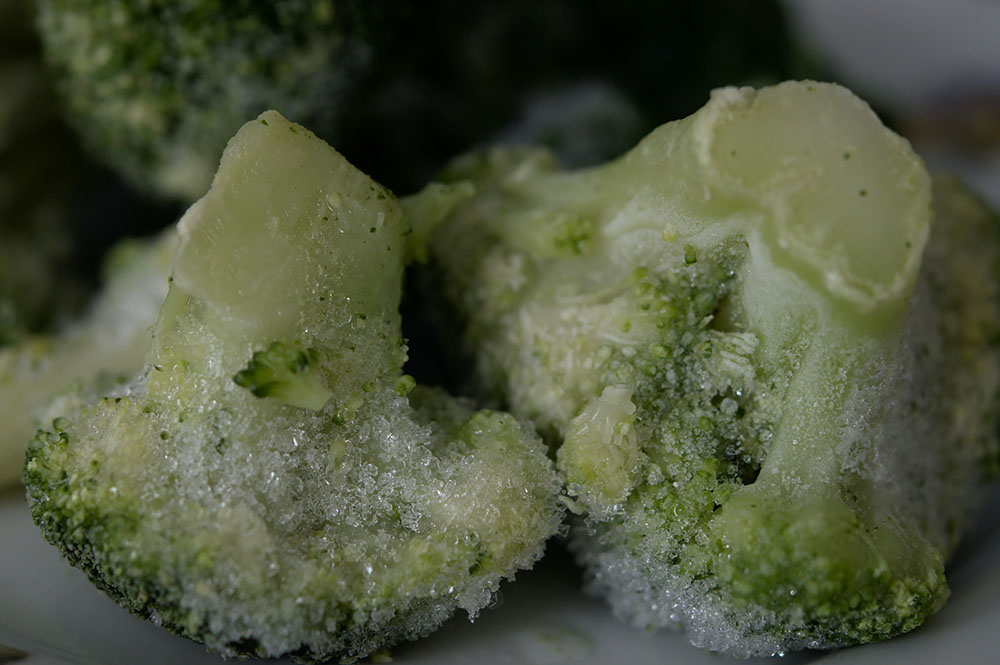
- Rinse well selected vegetables for freezing in a weak solution of vinegar (for preparation, go from the proportions of 3 tsp. per 5 liters of liquid);
- Rinse the cabbage under running water and dry thoroughly on a paper towel;
- Break the forks into florets. They should be no more than 3 centimeters in diameter;
- Blanch the vegetables (no more than 3 minutes) and then dip them in cold water;
- Dry the vegetables;
- Place them in bags. Preferably vacuum-sealed;
- Put the bags with vegetables in the freezer.
Pickled Cabbage

Cabbage is pickled, but canned rarely – usually kept simply in barrels or in jars covered with non-hermetic lids. Sauerkraut can be kept in the refrigerator for several months.
How do you know if the cabbage has gone bad?
You can tell if the cabbage is spoiled by the color and smell. Spoiled vegetable begins to rot, covered with black dots or spots, there is an unpleasant smell. Sometimes the cauliflower looks normal on the outside, but when you cut it, you can see black spots or rotting – it should be thrown away immediately. If the leaves are rotten or blackened on the outside, you can cut them off and cook the vegetable itself, but with the use of heat treatment (fry or stew).
Another cause of spoiled cabbage is slugs, which settle in the cabbage. They can survive even in the refrigerator. They are not dangerous, but such a cabbage will probably rot quickly.
Spoiled cabbage will not taste good. In some cases, eating spoiled vegetables can cause food poisoning, especially among children.
20 ideas for cooking cabbage: salads, side dishes and soups
And now – those 20 original, simple and delicious dishes from cabbage, which everyone can cook, which I promised at the beginning of the article.
- Chef Jamie Oliver’s classic Cole Slaw – his recipe is on my website.

2. Chinese Fried Cabbage. Another interesting dish on my site. It cooks very quickly, due to the quick wok frying technique, the cabbage is very crispy, it remains juicy. The dish is quite spicy due to the Sichuan pepper.

3. Vegetarian cabbage soup. This recipe can be adapted to your taste in different ways and you can add your favorite vegetables to it.

4. Spicy coleslaw with fish sauce. If finding papaya is problematic for you, you can substitute a similarly textured vegetable or fruit – such as carrots or apples.
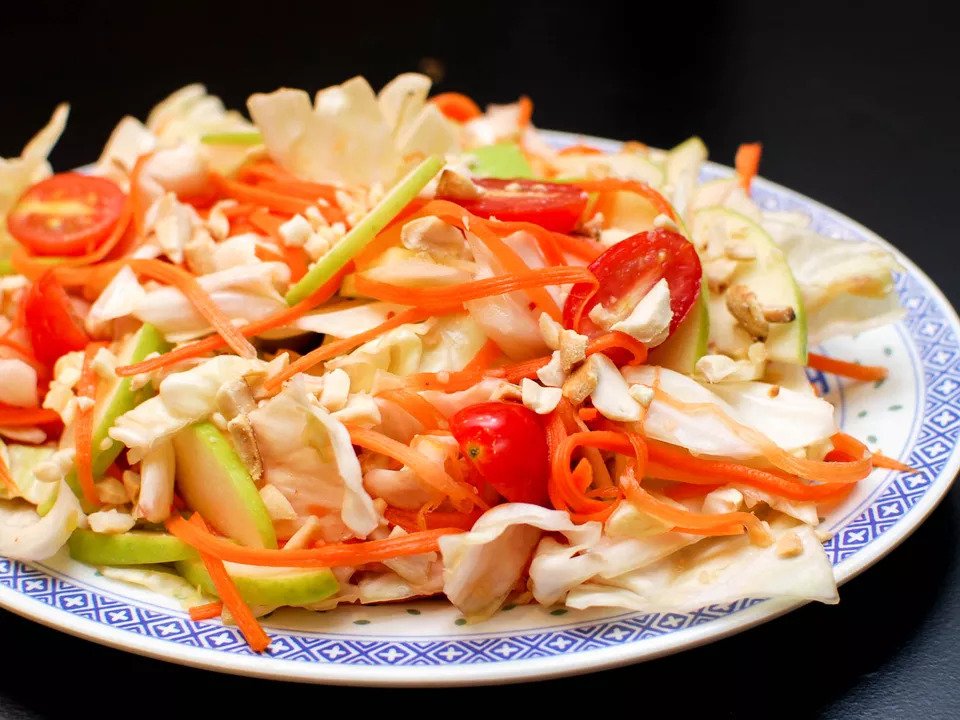
5. Peking cabbage salad with oranges. Very fresh and pleasing in texture – the crunchy peking leaves play very interestingly with the juicy pulp of an orange. It can be a separate snack or a light side dish to fish or meat. You can add some fresh mint, it will give the dish an unusual touch.
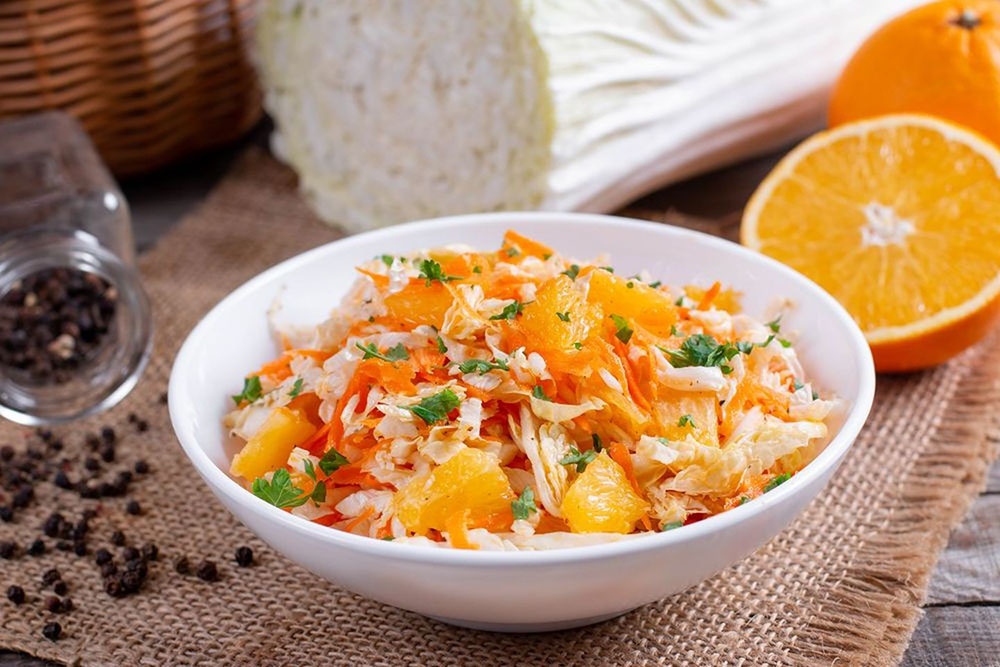
6. Stir-fry of bok choy with ginger and garlic. An explosion of spicy flavors, savory notes, freshness and juiciness. The dish takes only a couple of minutes and will be a chic side dish to meat or fish, cooked in the Asian style.

7. Bigos is a classic of Polish and Lithuanian cuisine. Nourishing, tasty, inexpensive – it is prepared with the simplest ingredients. It is a complete second course, which can be served for lunch or dinner.

8. Cheese casserole with cabbage. It is much easier to prepare than its potato counterpart, and tastes more interesting. And there are fewer calories, the dish is great for those who watch the figure.

9. Chicken and cabbage salad with creamy tahini. If you have leftover fried chicken breast from lunch, don’t rush to throw it away – you can make a great salad with red cabbage from the leftovers.

10. Tabbouleh with kale and tomatoes. This recipe has less bulgur than the classic recipe, so the salad will come out very light.
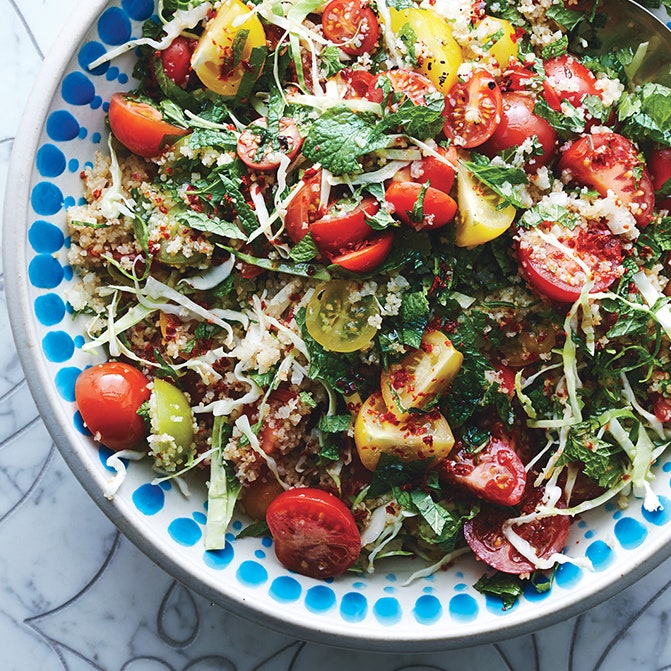
11. Roasted whole kale. This is a great substitute for holiday turkey for vegetarians.

12. Red cabbage and onion tortillas. The mildly sweet flavor of tortillas provides the perfect backdrop for kale, and it gets a crunch and bright acidity.

13. Kale Steak. Steak is a typical meat dish, but this recipe is 100% vegetarian. Vegans and meat-eaters alike will love this dish – everyone will see something different in it.

14. Shrimp and broccoli with honey-soy sauce. An unusual dish that is easy to prepare and suitable for unexpected guests. You can serve it as an appetizer or as a complete second course – it all depends on the size of the portion.

15. Asian-style pork nacho with red cabbage and green onions. Homemade fried wontons make a great accompaniment to pork nachos, but you can substitute them for tortillas or chips.

16. Baked cabbage and chicken salad. Fresh cabbage usually goes in salads, but if you pre-bake it in the oven, the texture will change. The vegetable will become soft, tender and will wonderfully accentuate the taste of marinated chicken.

17. Cauliflower with carrot puree. We’re used to cabbage being a side dish. But in this vegetarian dish, it acts as the star, and the garnish of mashed carrots will give a sweet note. We’ll need it because we’ll generously top the dish with searing ginger.

18. Broccoli and cheddar pizza. This is a great breakfast. Now, you might argue that you want something simpler for breakfast so you don’t have to fuss with cooking for a long time. But I have an argument – the pizza is very quick and easy to make.

19. Cabbage casserole with egg. An alternative to pizza, it’s even easier to make. The most simple ingredients are required, so you can cook this dish when you do not want to go to the supermarket – everything you need is most likely in your fridge.
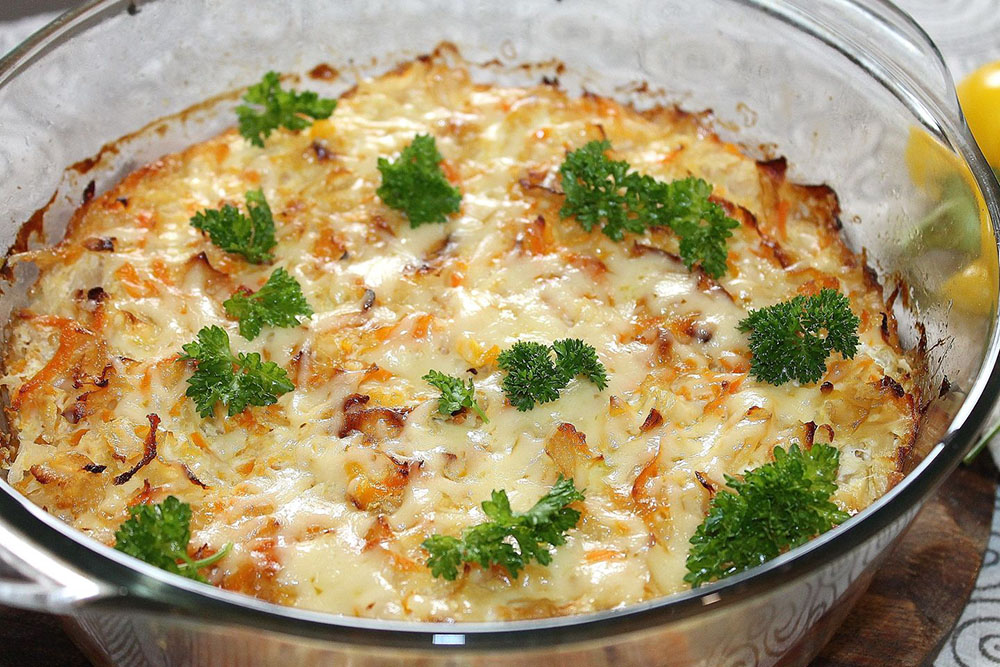
20. Roasted cabbage and apples with Italian sausage. The classic sausage and cabbage combination is flavored with apples and red wine vinegar. Take any kind of sausage – I like spicy turkey to this dish.
